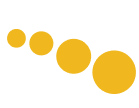Our Senior Musculoskeletal Physiotherapist, Joey Ng has kindly shared her knowledge on a Shoulder Labral Tear!
What is the Shoulder Labrum?

The glenohumeral joint is a ball and socket joint at the shoulder and is the most mobile joint in the body. The shoulder labrum is a ring of fibrocartilaginous tissues which sits around the glenoid rim (joint socket).
What is the function of the Shoulder Labrum?
The shoulder labrum increases the stability of the joint by:
- Expanding the size and depth of the ‘socket’, creating a greater surface area for the ‘ball’ to contact the ‘socket’.
- Containing synovial fluids, which creates a ‘suction’ pressure to keep the ball stable in its socket.
- It also has attachment sites for several shoulder ligaments and the biceps tendon.
What is a Labral Tear?

A labral tear happens when there is a lesion in the labrum. There are several types of labral tears and they are classified based on the location, structures involved and the extent of injury. The more common types are Superior Labrum Anterior to Posterior (SLAP) lesions and Bankart lesions. A SLAP lesion occurs on the top-most region of the labrum and may involve the biceps tendon. A Bankart lesion involves the front and bottom aspect of the labrum.
Mechanism of Injury
Labral tears typically fall into 2 categories:
- Acute external force (less common) which includes falling on an outstretched hand, lifting heavy objects or forceful overhead movements. It may involve a shoulder dislocation.
- Repetitive overhead injury and overuse (more common) which occur in sports that require sudden pulling movements or forceful throwing such as racquet sports or throwing.
Signs and symptoms

If you have a labral tear, you may present with:
- Inability to achieve normal speed or strength during movement
- Catching or locking of the shoulder joint
- ‘Popping’ sounds when moving your shoulder
- Reduced shoulder range of motion
- Dull aching pain in the shoulder joint
- Difficulty sleeping on the affected shoulder
- Frequent shoulder dislocations
Diagnosing a labral tear
A physiotherapist can perform a series of clinical tests to establish labral tears. The physiotherapist can also identify the structural injuries involved, as well as determine the joint impairments which may have contributed to the tear. However, the gold standard in diagnosing a labral tear accurately is with a shoulder Magnetic Resonance (MR) arthrography which can be done by orthopaedic surgeons.
Management of Labral Tears
You may be referred to see a physiotherapist if the extent of your labral tear is minor, or if your doctor determines that rehabilitation is beneficial before considering surgical intervention.
Conservative Management
Conservative management involve addressing the impairments which could have contributed to the tear as well as rehabilitation of affected structures such as the biceps or rotator cuff muscles. Appropriate treatment programmes and home exercises will be prescribed by a physiotherapist with the goal of restoring normal function, optimising your shoulder range, strength and control as well as preventing your labral tear from deteriorating.
Surgical Management
If the extent of tear is large and there are multiple structures involved, your doctor may recommend surgical intervention. In cases where conservative treatment is unable to help you return to sports at your previous level of performance, surgical intervention may be recommended as well.
Post-surgical rehabilitation will involve a phased progression of shoulder strengthening and control exercises. Your shoulder may be immobilised in an arm sling for up to 8 weeks post-surgery (dependent on extent of surgical intervention performed). It may take 6 to 9 months of rehabilitation before you can return to sports.
Exercises which may be useful for you

Prognosis
Prognosis differ based on the location and extent of tear as well as the level of activity you are returning to. Small degenerative tears are usually well-managed with conservative treatment. For the sporting population, 50% of athletes with SLAP lesions return to play with conservative and/or surgical treatment. Arthroscopic repairs for SLAP lesions have been shown to have good to excellent results in patients who are not involved in sports.
Hope you have found the above information useful. Seek advice from a physiotherapist now for a customized treatment program!
Feel free to contact us at 91268257 should you need to consult a Physiotherapist!






